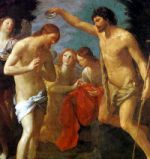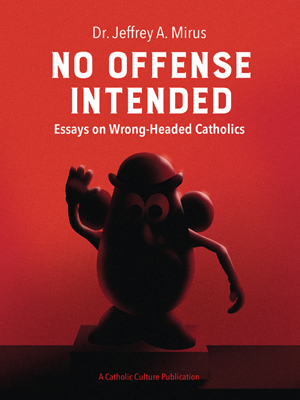Catholic Activity: A Christmas Jesse Tree
An article "A Christmas Jesse Tree" by Sister M. Margaret Rose, S.S.J. from the Journal, Worship XXVIII:I, December 1953, pp. 35-38. Sister was a high school teacher. Even though she references 1950s textbooks, there are wonderful ideas for students to make their own Jesse Tree with their own research.
DIRECTIONS
The October cover of Worship, modeled on the medieval Jesse tree, prompts us to tell you about our Jesse Advent and Christmas tree. Some years ago we initiated it in a New Jersey high school, and are now using it in Pennsylvania in several schools. Novices in England this year will be making one, and a woman’s group in Minnesota is planning an Advent program based on it.
Ours is a Christmas tree designed to put Christ back into Christmas. The ornaments, made by the children, represent the ancestors of Christ. Imagination is fired by reading of these characters in the messianic story, and some of the symbols and figures used have indeed been ingenious. Last year some of them were home-baked cookies decorated with colored sugar. Others were paper or cloth with a taffy base, and yet others used little shiny Christmas balls for patriarchal heads. On the original tree we had used only symbols, many of them taken without leave or license from Orates Fratres, and done up in colored shiny paper that was then pasted on aluminum kitchen foil. A box of “good junk” in the classroom, scraps of shiny paper, rich cloth, fur, metallic stripping, etc., provides material and suggests further ideas for construction.
The base of our tree is wrapped in corrugated paper cut to represent a tapering root, and Jesse’s symbol is placed thereon. With abandon, we then cut back to Adam and Eve. An apple with two bites out and a serpent coiled about it tells their doleful story. A few green leaves attached to red Christmas balls provide other apples to place among the branches, to remind us of the grip that sin had upon the world through the long ages of waiting for the Redeemer.
Pushed down over the topmost spiny branch of the tree is a plastic disc supporting twelve aluminum-foil stars. Just before school lets out before Christmas, we place in a test tube that we have scotch-taped above on this branch the most beautiful rose we can procure from the florist, swaddled in maiden-hair fern. Lettered in gold on the blackboard near the three is this:
Our Christmas tree represents, as does the liturgy of the season, the longing of sinful mankind for its Redeemer. The cry of the Old Testament for the Savior -- ‘Drop down dew, ye Heavens, from above, and let the clouds rain the Just One’ – is repeated in the New Dispensation in which we share. ‘Let the earth open and bud forth a Savior!’ cried the ancestors of Christ who are represented by symbols on our Jesse tree. Our cry is the same: that the Christmas Rose, who is Jesus Christ, will bud in our hearts, from the branch that is Mary. She who wears a crown of twelve stars lights the way to her divine Son. Let us redouble our prayers in these last Advent days that Christ be truly reborn in us. ‘Come Lord Jesus, and tarry not.’
The Missal for us is a rich source during the days of our preparation. Study sheets are mimeographed with suggestions for research. The tree makes us conscious of what Advent really is: preparation for the coming of the Redeemer, now, and in His Second Coming. We pray the “O Antiphons” with greater fervor, and say every day of Advent Paul’s words of desire: “We await a Savior, the Lord Jesus Christ, who will reshape the body of our lowliness after the shape of the body of his splendor; temperately, justly, reverently, let us live in this world, awaiting the blessed hope and advent of the glory of the great God.”
Making our Jesse tree has been lots of fun. We sing while constructing it, and sing around it after it is completed. Under it we place our crib, beneath the branch from which hangs Ruth’s symbol. We tell our many visitors the stories about the figures, and when Christmas comes at last we all feel somewhat as those men and women did whose representations adorn our Jesse tree. Following is one of the study sheets we used.
Who’s Who in Christ’s Family Tree?
Who are the ancestors of Christ whom we are going to depict in the ornaments of our Jesse tree? We will not always be sure which persons are in the direct line of descent, but we will be on the lookout for any information that will help us to sort them out. In some cases we may even put on our Jesse tree persons not in the direct line, some of the prophets, for example, because they helped to keep alive the messianic hope in the long Advent of the world before Christ.
The following research exercises will assist you in drawing up your list. Do as many of them as you can. Put one name on a line, leaving space for information about them beside each, filling this in as you go along.
1. Both Matthew and Luke give us detailed genealogies of Christ. They are in time order, but one ascends and the other descends. Neither one is complete but they are the best point to start in drawing up a list. Refer to the first chapter of Matthew’s Gospel and the third of Luke’s for these family histories. (If you are particularly annoyed because these two lists do not agree exactly, you can look in the library in the Commentary on the New Testament for an explanation of these genealogies. Matthew’s list is commented on pp. 32-35, and Luke’s on pp. 245-246. Or you can look in the Catholic Encyclopedia under “Genealogy of Christ,” Vol. IV, pp. 410f.).
2. Freshmen will find in the very first lesson of the text, The Way, the Truth, and the Life (pp. 4-5) many O.T. personages with important information about each. List these names and jot down in a few words beside them how they carry on the messianic thread. Here and elsewhere (Part 11, Unit IV, pp. 217ff.) are given those that are known as types or figures of Christ, and the reasons why. Note these on your list with an asterisk, for special handling. Do the same for the O.T. types or figures of our Lady. Look in the lessons, “The Immaculate Conception,” and “The Virgin Mary” in Part 11 of your text for help (pp. 215, 227).
Sophomore will find in the first chapters of their text, The Triumph of Faith, O.T. names of great importance. List these with the information beside them that shows how they carried on the messianic hope. Look also in the second part of your text, the section on the Mass, for information about some of the O.T. figures that are mentioned in the Mass itself.
3. List all the O.T. figures you can find in the Ordinary of the Mass.
4. List all you can find in the Masses for Advent. If you have a daily missal, you will find many more than in the Sunday Missal. (In the Advent season the Church tries to place prominently before us these persons who led the way to Christ.)
5. Isaiah, John the Baptist and Our Lady are the three great figures of Advent. Find all the references you can to these three in the Advent Masses.
6. Besides Isaiah who is found so much in Advent, other prophets pointed to Christ, and still point to Him, in fact, for they dwelt more on His Second Coming in glory, the Parousia, when Christ will gather up the fruits of the Redemption at the end of the world. Look in the Masses at the end of the Church year for these other prophets whose messages are put before us then. The Church wants us to think of both Comings at Christmas.
7. Which prophet foretold that Christ would come of the root of Jesse? How long before Christ did he live?
8. Look up in the index volume of the Catholic Encyclopedia for ”Jesse, Father of David.” Look up the references to the other volumes that it lists there. Jot down all the facts that you can find about him.
9. There are simply written Bible histories in the library that not only retell the stories of the O.T. but explain their significance. Some of you may have one at home. Look there for names to add to your list, or information that will complete those you already have, that will show their messianic connection. A good reference for many of the names on your list is The Oldest Story: The Story of the Bible for Young People, by Blench Jennings Thompson. Perhaps you can procure a copy of Fulton Oursler’s Greatest Book ever Written: it too will help to bring these characters vividly to life for you.
10. Already you may have found of the types or figures of Christ and of our Lady. Check your list for those with an asterisk. Look in all the feasts of our Lady in your missal, preferably a daily missal, for all the mentions of her types that you can find, in the epistle or elsewhere, in the Mass text. Be sure to look (if your missal is very new – since 1950) at the epistle of the new Mass composed for the Assumption.
11. Freshmen, read in your text (The Way, the Truth, and the Life) on page 218, “Symbols of the Redeemer.” List these at the end of the list of O.T. personages you have made. Not only in prophecy and type or figure was the Messias made known to the Jews, but also in these symbols.
12. Read all the notes in a daily missal that explain the significance of Advent. Usually you will find O.T. names listed there, and the reason for their inclusion in the liturgy of the season explained. The best missal for this purpose is the St. Andrew’s Daily Missal (full edition).
13. Look around your parish church thoroughly (not during Mass, please!) for any representations of the figures you have already found. How are these O.T. people represented? Have they symbols? (We are going to borrow shamelessly, but it is a holy vandalism.) Make sketches, rough if need be, so that we can perhaps copy them and place them on our tree. Do you find any representation of the tree of Jesse in stained glass or otherwise in your parish church?
14. As you work on your list you will find some figures interesting you more than others, for various reasons. Select a few and work out their stories as fully as possible. (The purpose of this exploratory work is not to see how long a list you can make, though we wish enough to load our tree bountifully.) Keep thinking of symbols that might be used to represent the different persons, such as the crown and the harp and the slingshot for David. Know the reasons why certain symbols that you come across are used. Perhaps you can think of some better ones than those you read about.
Activity Source: Orate Fratres/Worship: A Review Devoted to the Liturgical Apostolate , The Liturgical Press






